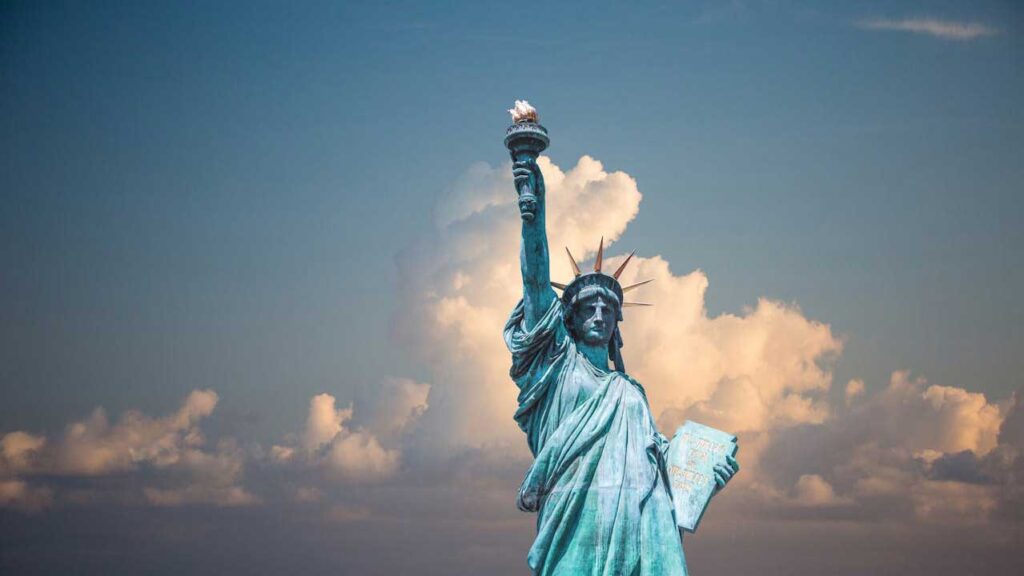The history of the United States of America is a vast and complex tale of exploration, colonization, conflict, and innovation. From the early days of indigenous civilizations to the formation of a powerful global nation, the story of the U.S. spans centuries and encompasses a diverse array of cultures, peoples, and events.
Indigenous Peoples and Early Exploration
Long before European settlers arrived, the land that would become the United States was inhabited by numerous indigenous tribes, each with its own unique culture, language, and societal structure. These native peoples, including the Iroquois, Apache, Sioux, and Cherokee, among others, lived in various regions across the continent, developing complex societies with rich traditions and deep connections to the land.
The first European explorers to arrive in North America were the Norse, led by Leif Erikson around the year 1000. However, it wasn’t until the late 15th century that European colonization efforts began in earnest. Christopher Columbus’s 1492 voyage, sponsored by Spain, is often cited as the beginning of European exploration in the Americas, although he did not reach the land that would become the United States.
Colonization and Settlement
In the early 1600s, European powers, particularly England, France, and Spain, established colonies in what is now the United States. The English settled along the Atlantic coast, with the first permanent colony established in Jamestown, Virginia, in 1607. The Pilgrims, seeking religious freedom, founded Plymouth Colony in 1620, laying the groundwork for the Massachusetts Bay Colony and the broader New England region.
Over the next century, the English colonies expanded, with settlers pushing westward, often at the expense of indigenous populations. The economy of the southern colonies, particularly in Virginia and the Carolinas, became heavily reliant on agriculture, especially tobacco and cotton, which in turn led to the importation of enslaved Africans to work on plantations.
The Road to Independence
Tensions between the American colonies and the British Crown began to rise in the mid-18th century, largely due to disputes over taxation, representation, and governance. The French and Indian War (1754–1763), part of the broader Seven Years’ War, left Britain with a massive debt, which it sought to alleviate by taxing the colonies. Measures like the Stamp Act of 1765 and the Townshend Acts of 1767 fueled colonial anger and resentment.
In response, the colonies began to organize and resist British rule. The First Continental Congress met in 1774, and the conflict eventually escalated into armed conflict in April 1775 with the Battles of Lexington and Concord. The Declaration of Independence, drafted by Thomas Jefferson and adopted on July 4, 1776, formally declared the colonies’ intent to break away from Britain.
The Revolutionary War and the Birth of a Nation
The American Revolutionary War (1775–1783) was a hard-fought struggle between the American colonists, who sought independence, and the British, who aimed to maintain control over their empire. Key figures like George Washington, who served as the commander-in-chief of the Continental Army, played crucial roles in securing American victory.
The war ended with the Treaty of Paris in 1783, in which Britain recognized the independence of the United States. The new nation faced the daunting task of creating a stable government, leading to the drafting of the Articles of Confederation, the country’s first constitution, in 1781. However, the Articles proved inadequate, prompting the Constitutional Convention of 1787, where the current U.S. Constitution was written and later ratified in 1789.
Expansion and Conflict
The 19th century was marked by rapid expansion, as the United States pursued a policy of Manifest Destiny—the belief that it was the nation’s destiny to expand across the North American continent. This expansion often came at the expense of indigenous peoples, who were forcibly removed from their lands, most notably through the Indian Removal Act of 1830 and the subsequent Trail of Tears.
The acquisition of new territories, including the Louisiana Purchase in 1803 and the annexation of Texas in 1845, fueled tensions over the issue of slavery. The U.S. Civil War (1861–1865) was the culmination of these tensions, pitting the Northern states (the Union) against the Southern states (the Confederacy), which sought to secede from the Union to preserve the institution of slavery. The war resulted in the defeat of the Confederacy, the abolition of slavery, and the beginning of Reconstruction—a turbulent period aimed at rebuilding the South and integrating formerly enslaved people into American society.
Industrialization and Global Influence
The late 19th and early 20th centuries saw the United States emerge as an industrial powerhouse. The country’s economy grew rapidly, fueled by technological innovations, the expansion of the railroad network, and the influx of immigrants seeking better opportunities. Urbanization increased, with cities like New York, Chicago, and Pittsburgh becoming centers of industry and commerce.
During this period, the U.S. also began to assert itself on the global stage. The Spanish-American War in 1898 resulted in the U.S. acquiring territories such as Puerto Rico, Guam, and the Philippines, marking the nation’s entry into imperialism. The U.S. played a significant role in World War I, and its involvement in World War II solidified its position as a global superpower.
The Modern Era
The post-World War II era saw the United States and the Soviet Union emerge as the two dominant global powers, leading to the Cold War—a period of intense geopolitical tension and competition. Domestically, the U.S. experienced significant social and political change, including the Civil Rights Movement, which sought to end racial segregation and discrimination against African Americans, and the Women’s Rights Movement, which fought for gender equality.
In the latter half of the 20th century, the U.S. faced numerous challenges, including the Vietnam War, the Watergate scandal, and economic recessions. However, it also saw tremendous technological advancements, including the space race, which culminated in the 1969 moon landing, and the rise of the digital age in the 1980s and 1990s.
The 21st Century
The 21st century has brought new challenges and opportunities for the United States. The September 11, 2001, terrorist attacks profoundly impacted the nation’s foreign and domestic policies, leading to the War on Terror and conflicts in Afghanistan and Iraq. The U.S. also faced the Great Recession of 2008, which had global economic repercussions.
In recent years, the U.S. has grappled with issues such as political polarization, social justice movements, climate change, and the COVID-19 pandemic. Despite these challenges, the United States remains a key player on the world stage, known for its cultural influence, technological innovation, and commitment to democratic ideals.
Conclusion
The history of the United States is a story of resilience, conflict, and change. From its beginnings as a collection of colonies to its current status as a global superpower, the U.S. has continually evolved, shaped by the diverse people who call it home and the complex events that have defined its trajectory. As the nation moves forward, its history remains a vital foundation for understanding its present and future.



